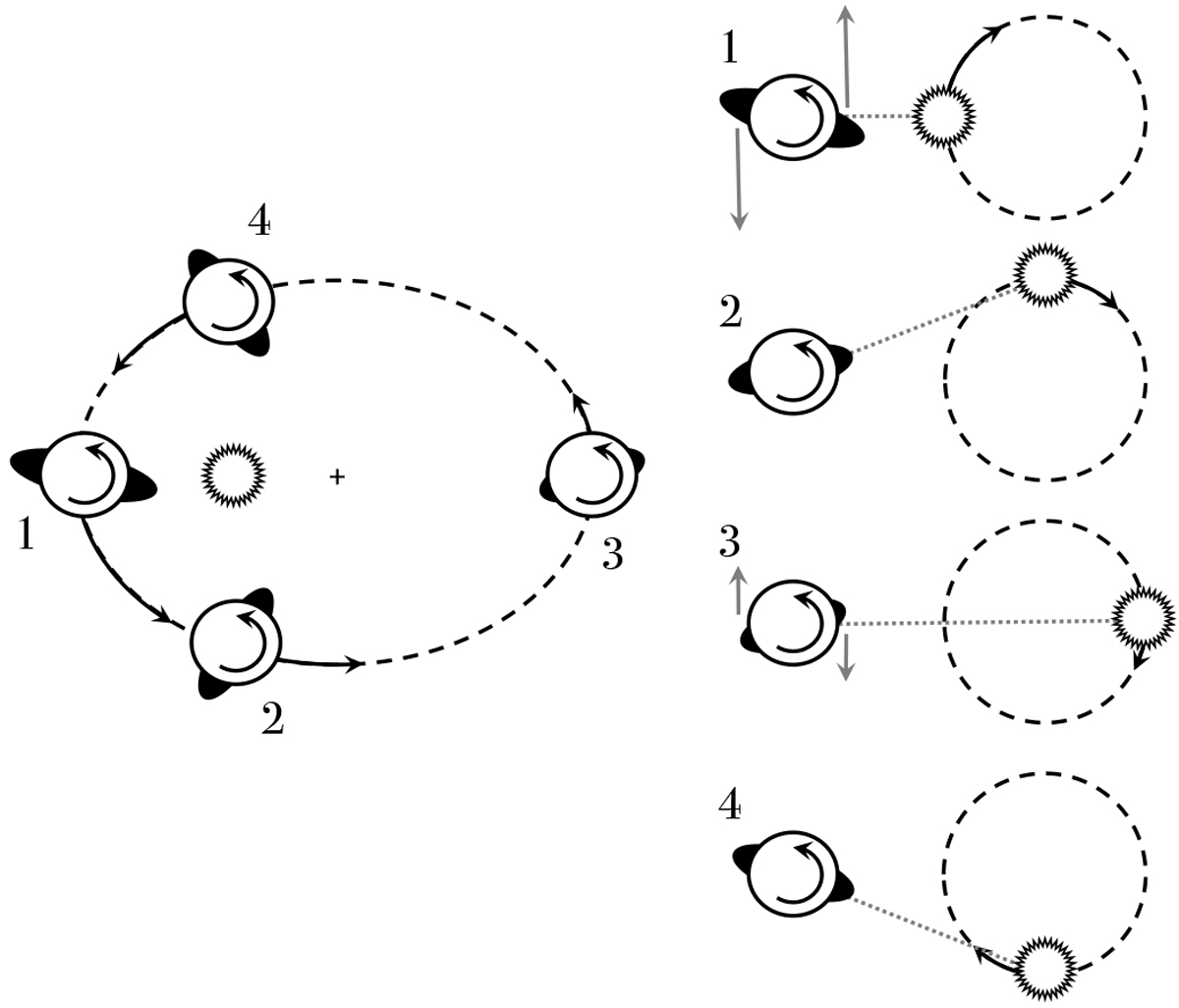Fig. 2

Desynchronising mechanism of eccentricity tides. Tidal bulge raised on a planet by the host star in the heliocentric reference frame (left) and in a planetocentric reference frame rotating with the planet mean motion (right). The tidal gravitational forcing is assumed to be dominated by its eccentricity components, given by Eqs. (9) and (10). Because of the angular lag generated by dissipative processes, the rotation of the planet is accelerated by the component of degree s = 3 (the eastward propagating potential) in the vicinity of the periastron. Conversely, it is decelerated by the component of degree s = 1 (the westward propagating potential) to a lesser extent in the vicinity of the apoapsis.
Current usage metrics show cumulative count of Article Views (full-text article views including HTML views, PDF and ePub downloads, according to the available data) and Abstracts Views on Vision4Press platform.
Data correspond to usage on the plateform after 2015. The current usage metrics is available 48-96 hours after online publication and is updated daily on week days.
Initial download of the metrics may take a while.


